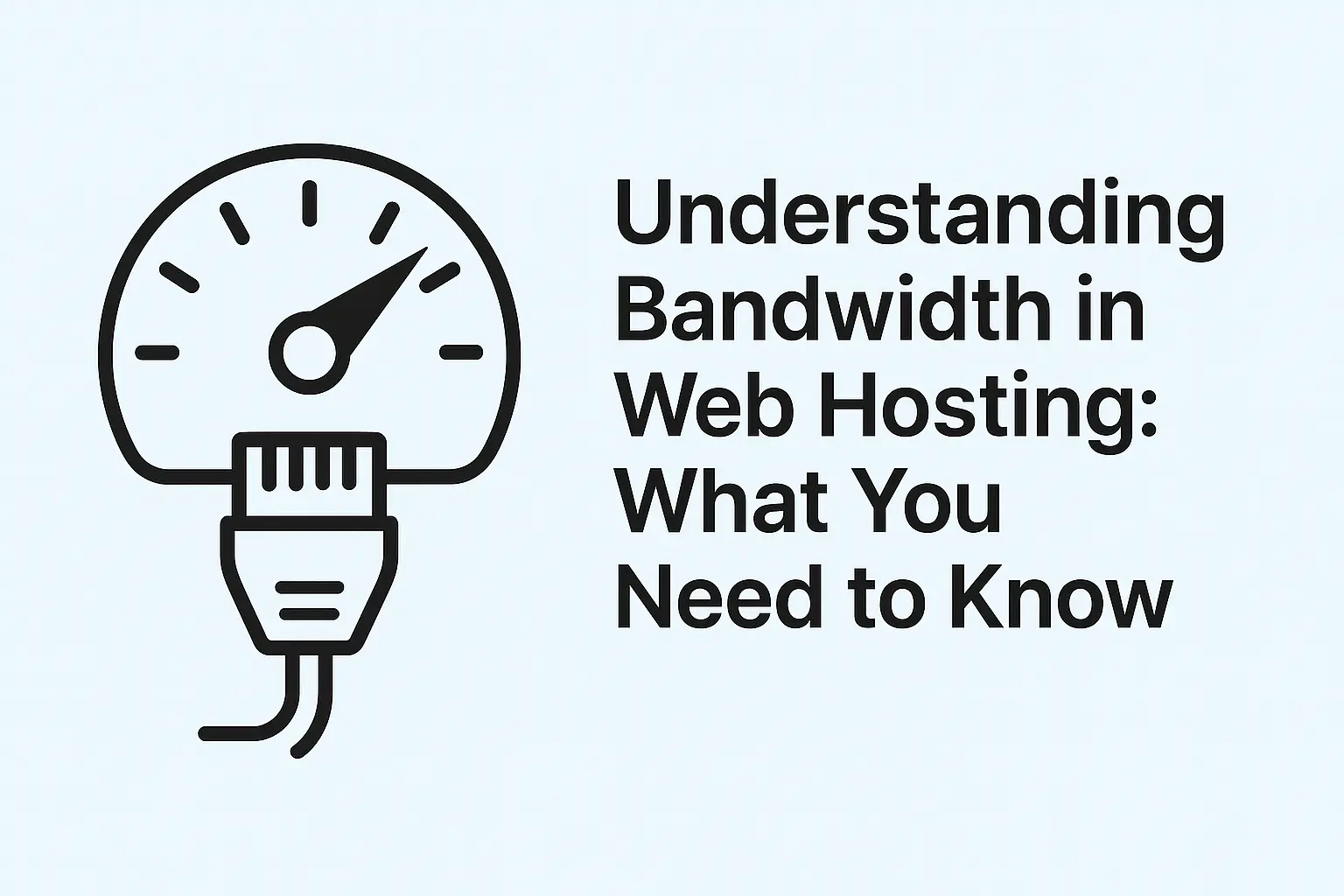When selecting a web hosting plan, one of the most important factors to understand is bandwidth. Bandwidth affects how much data your website can transfer to visitors, impacting site speed, traffic handling, and overall user experience. This article explains what bandwidth in web hosting means, why it matters, how to estimate your needs, and tips to optimize bandwidth usage.

What Is Bandwidth in Web Hosting?
Bandwidth in web hosting refers to the amount of data that can be transferred between your website’s server and its visitors over a given period, usually measured monthly in gigabytes (GB) or terabytes (TB). It represents the capacity of your hosting plan to deliver website content such as text, images, videos, and files to users.
Think of bandwidth as a highway: the wider the highway, the more cars (data) can travel simultaneously. If your bandwidth is limited, fewer visitors can access your site at once without slowdowns or interruptions.
Bandwidth and data transfer are often used interchangeably by hosting providers, but technically:
- Bandwidth is the maximum data transfer capacity allowed.
- Data transfer is the actual amount of data sent over time.
What is SSD Web Hosting and Why It Matters in 2025?
Why Is Bandwidth Important for Your Website?
Bandwidth determines how much traffic your website can handle and how quickly content loads for visitors. If your site exceeds its bandwidth limit, common consequences include:
-
Slower page load times due to throttling
- Temporary suspension or downtime
- Additional overage fees
Proper bandwidth allocation ensures smooth performance during traffic spikes and maintains a positive user experience, which is essential for SEO and visitor retention.

How to Calculate How Much Bandwidth You Need
Estimating your bandwidth needs involves considering:
- Average page size: Total size of your web pages including images and media (in MB)
- Monthly visitors: Number of people visiting your site
- Average page views per visitor: How many pages each visitor views
A simple formula:
Bandwidth (GB) = (Average Page Size in MB × Monthly Visitors × Average Page Views) ÷ 1024For example, if your average page size is 2 MB, with 25,000 visitors each viewing 3 pages:
Bandwidth = (2 × 25,000 × 3) ÷ 1024 ≈ 146 GB/monthAlways add a buffer (e.g., 20-30%) to accommodate traffic spikes and future growth.
Step-by-Step Guide to Choosing the Right Bandwidth Plan
- Analyze your website content: Larger files like videos require more bandwidth.
- Estimate your traffic: Use analytics tools to predict monthly visitors and page views.
- Calculate bandwidth needs: Use the formula above or online bandwidth calculators.
- Review hosting plans: Compare bandwidth limits and policies on overages or throttling.
- Consider scalability: Choose a host that allows easy bandwidth upgrades as your site grows.
Tools and Resources Needed
- Website analytics tools: Google Analytics or similar to track visitor numbers and behavior.
- Bandwidth calculators: Online tools to estimate bandwidth needs based on your data.
- Image compression tools: To reduce file sizes and save bandwidth (e.g., TinyPNG, ImageOptim).
- Content Delivery Network (CDN): Services like Cloudflare to optimize bandwidth usage by caching content closer to users.

Common Mistakes & How to Avoid Them
- Underestimating traffic: Leads to bandwidth overages and slowdowns. Use accurate analytics and add a safety margin.
- Ignoring file sizes: Large images and videos consume bandwidth quickly. Optimize media before uploading.
- Choosing “unlimited bandwidth” without understanding limits: Many hosts impose fair use policies that can throttle or suspend your site.
- Not monitoring bandwidth usage: Regularly check usage to avoid surprises and upgrade plans proactively.
Additional Tips & Best Practices
- Enable caching: Reduces bandwidth by storing frequently accessed content locally on visitors’ devices.
- Use lazy loading: Load images and videos only when they enter the viewport to save bandwidth.
- Leverage a CDN: Distributes content globally, reducing server load and bandwidth consumption.
- Compress images and files: Smaller files mean less bandwidth usage and faster load times.
- Regularly audit your website: Remove unnecessary plugins or media that increase bandwidth usage.
Frequently Asked Questions (FAQs)
1. What happens if I exceed my bandwidth limit?
Your website may slow down, become temporarily unavailable, or incur additional fees depending on your hosting provider’s policies.
2. Does “unlimited bandwidth” mean unlimited data transfer?
Not necessarily. Many hosts advertise unlimited bandwidth but apply fair use limits or throttle speeds after a certain threshold.
3. How can I monitor my bandwidth usage?
Most hosting providers offer dashboards or tools to track bandwidth. You can also use third-party analytics for detailed insights.
4. Can I upgrade my bandwidth later?
Yes, most web hosts allow you to upgrade your plan or bandwidth allocation as your website grows.
5. Is bandwidth the same as internet speed?
No. Bandwidth is the amount of data transferable over time, while speed refers to how fast data travels. Both affect website performance but are different metrics.
Summary & Conclusion
Understanding bandwidth in web hosting is crucial for ensuring your website performs well and can handle your expected traffic. Bandwidth sets the limit on how much data your site can transfer to visitors, impacting speed, accessibility, and user experience. By accurately estimating your bandwidth needs, choosing the right hosting plan, and optimizing your website’s content, you can avoid performance issues and extra costs.
Consider hosts that offer scalable bandwidth options and transparent policies. For reliable hosting with good bandwidth features, explore providers like Hostinger, Kinsta, DreamHost, or WP Engine.
By managing bandwidth wisely, your website will deliver a smooth, fast experience that keeps visitors engaged and supports your online goals.


